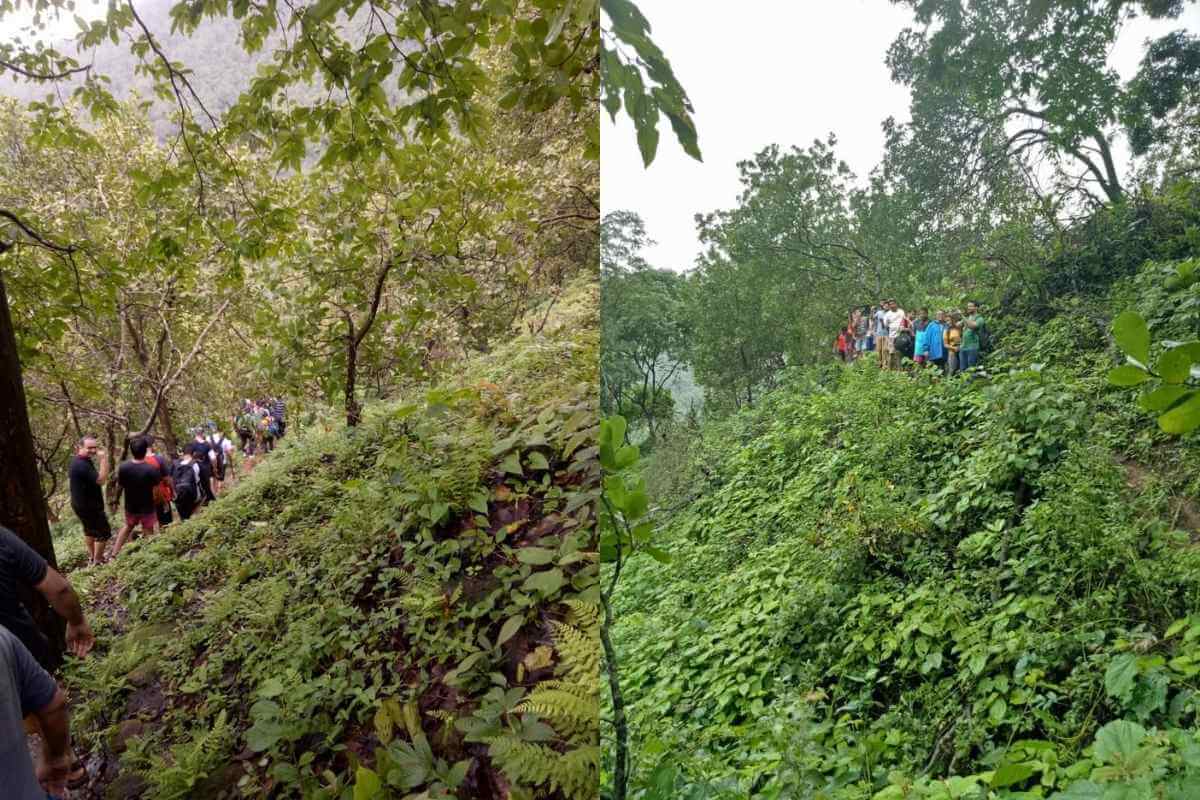We all associate Goa with beaches, entertainment, vacations, and enjoyment. Rarely is it noted that it reflects a tremendous history, beautiful architecture, and rich artistic and artisan heritage.
The other side of Goa, which is sometimes overlooked, features lovely harbours, broad rivers, churches, and established fishing settlements. These tribes and communities share their tales of Goa’s growth with us. the liberation of Goa, the smallest state in India, from Portuguese authority and into Indian hands.
About Kunbi Saree
Before the arrival of the Portuguese in the 16th century, ladies from the Goan Kunbi tribe wore this traditional saree. It was a thickly woven red and white saree with cotton checks. It was appropriate for working on farms since it was worn short, above the ankles, with a knot over the shoulder, and without a top.
The Kunbi dance is also well-known, with the Kunbi women dancers moving to the music while clad in vibrant Kunbi saris. Women from the Kunbi and Gawda tribes who worked in the paddy fields historically wore this saree. This area is more in tune with nature. The length of this saree, which falls just below the knee, allows the Kunbi laborers the opportunity to continue with their daily tasks, which is primarily why the drape is basic. The Kunbi saree was originally woven with small and big checks and colored in red and black. The dye was made using a mixture of rice kanji (starch), vinegar, and iron ore. Goa has all of these in spades.
Originally, the choli was not worn with this saree. Traditional Kunbi ladies used to accessorize themselves with strands of black beads for their necklaces and simple glass red, green, and bangle bracelets. The heritage is so degraded and dead that Kunbi saris are primarily copies of patterns that are sold today.
How are Kunbi sarees made?
It is a conventional saree that has been painted black and red using a dye that is a mixture of vinegar, kanji (starch), and iron ore. It is also woven using various-sized checks. In Goa, there are many materials needed to make the dye for the Kunbi saree. Perhaps this is a major factor in the saree’s appeal in the state. Women used to wear it in the past by skipping the choli. However, nowadays they pair it with a blouse that has puffy sleeves.
The saree’s original appearance was very different from how it appears today. In the past, colored yarns and cotton were used to create unique warps that gave the saree its characteristic color pattern. The length of the saree was restricted by the weavers to between 4 and 5 yards at the time of weaving. Wendell Rodricks, a well-known designer, offered a different pattern without altering the fundamental characteristics of the Kunbi saree. According to his concept, modern Kunbi sarees have simple designs with an ethnic geometric pattern.
Designers use a cloth with a white field for it. The border of the saree clearly shows a variation in the pattern. Its size spans from 1 to 1.5 inches, and it has a checkered pattern and brilliant red warp threads. Wearing Kunbi sarees in the colors of red and navy blue is an ancient practice that has been greatly revived thanks in large part to Cottons Daily. Both of these sarees are adaptable, making them appropriate for a variety of settings.
Origin of Kunbi Saree
The roots of the term Kunbi are the words “kin” and “bee”. In the first, “people” is meant, whereas “seeds” is in the second. The ability to germinate from one seed to multiple seeds is the meaning that emerges when these two words are combined.
However, other individuals believe that it originated differently. They contend that a Marathi and a Sanskrit phrase are where the word “kunbi” originated. They assert that the Marathi term “Kunbawa” and the Sanskrit word “kur” are combined to get the word “Kunbi.” The adherents of this school of thought believe that persons involved in agriculture and cultivation are responsible for the creation of the name Kunbi. Women from the Gawda and Kunbi tribes were the first to wear this saree, to speak of its heritage.
For a very long time, this pattern persisted. It was practical for them to drape the saree below the knee since they toiled in paddy fields. It gave them the flexibility to labor comfortably for extended periods in the rice fields. The Kunbi saree is without a doubt one of the earliest female clothing items in Goa, despite some uncertainty around its exact inception date. In the past, tribe members who worked on farms wove it by hand. Soon after the Portuguese arrived in Goa, it temporarily came to an end. But it returned quickly once the Portuguese departed the country in 1961.
The credit for reintroducing the traditional saree of Goa can be attributed to Professor Rohit Phalgaonkar and other prominent historians who belong to Goa.






























